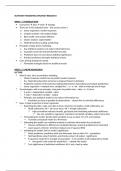Samenvatting
Summary Marketing Strategy Research | MSc Marketing Management | RSM - Erasmus University
Complete summary of all the lectures, tutorials and cases of the course Marketing Strategy Research given by Xi Chen in the master program Marketing Management. Good luck with studying!
[Meer zien]




